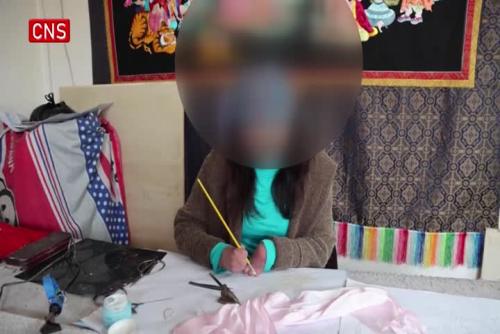Craftswoman embroiders exquisite work despite disability
(ECNS)-- As a traditional folk art in Huangzhong District, Xining, Qinghai Province, barbola is a national-level intangible cultural heritage that requires brilliant skills.
Ye Qilian, 44, from Xining, lost all her fingers and was disfigured in a fire when she was five. Cutting patterns hindered her barbola learning.
The biggest difficulty to me is cutting patterns with scissors because I have to use two hands, Ye said.
At the beginning, I randomly used something to help me. Then I found tools suitable for me like a small iron, tweezers or something having weight to fix the patterns when cutting, she added.
In addition to usual practice, Ye began to learn the sketching, painting, paper-cutting and needle techniques of diverse kinds of embroideries from others in 2009.
A perfect barbola work requires superb skills and also means a heavy workload, said Ye.
She needs to spend more effort than others in finishing a qualified work.
To break through in barbola, she spent half a year to mak six-meter-long The Night Revels of Han Xizai, a famous painting depicting a Southern Tang (937-975) banquet.
After years of painstaking research, Ye eventually became a barbola master.
Her works went on display at various embroidery exhibitions in Qinghai.
Ye said her embroideries were recognized widely, which brings her extra income aside from the living and nursing allowance for the disabled.
She was also invited to be a barbola instructor by some companies. She said she never thought her insistence on her hobby could change her life.
A 13-year barbola career has fixed her, said Ye.
With help from the local government, Ye established her studio in 2020.
She hopes to see the embroidery skills inherited and more disabled people start a new life through barbola.

